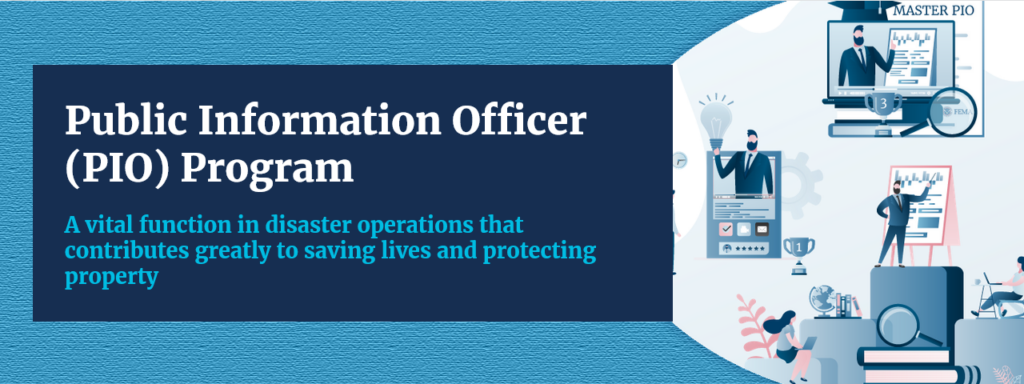Public information officers (PIOs) are vital communicators in the public sector. They connect government organizations with the media and the public. They ensure smooth, timely, and clear information flow on behalf of their organization.
PIOs have a varied and complex role. They announce important news or updates at press conferences or events. They write and publish press releases, social media posts, and other communication online. They answer questions and gather information from the public. They plan content strategies, write press releases, host events, arrange interviews, and maintain media relations.

FEMA and the federal government consider PIOs so important that it has created an entire standardized training curriculum, including a year-old Master PIO program. FEMA seeks to train PIOs with classes “designed to provide PIOs with the essential knowledge, skills, and abilities to support proper decision-making by delivering the right message, to the right people, at the right time.”
Effective communication and interpersonal skills are crucial for this role. PIOs also need to manage public perception, conduct media relations and ensure transparency.
The role of PIOs has changed with social media and AI in the public sector. PIOs must handle the ethical issues of AI and communicate about AI initiatives transparently and accessibly. PIOs also must craft and shape AI policy in the public sector.
To keep up with the latest trends and best practices in public information, PIOs can use various tools and sources, such as:
- Trend discovery tools, such as Exploding Topics and Google Trends, to find new and emerging topics and issues in their industry.
- Content curation tools, such as Feedly, Pocket, and Flipboard, to organize and access their favorite publications and blogs in one place.
- PR database tools, such as Pressfarm, to access and filter over 1 million journalists and media outlets by niche, location, and keywords.
- Social media platforms, such as LinkedIn, Twitter, and Instagram, to follow, connect, and interact with thought leaders and influencers in their field.
- Event platforms, such as Eventbrite, Meetup, and Lanyrd, to find and join events and activities that match their interests and goals.
- Feedback and analytics tools, such as SurveyMonkey, Google Forms, and Google Analytics. In your role as a PIO you will find yourself tasked with collecting and analyzing feedback and input from your agency’s audience and stakeholders, and to measure and monitor communication and outreach campaigns.
In summary, PIOs are essential for transparent and efficient public sector communication. They handle and distribute information to the media, public, incident personnel, and other organizations. They also need to keep up with the latest developments and innovations in their industry and stay ahead of the curve.
